What is the best way to build a bathhouse?
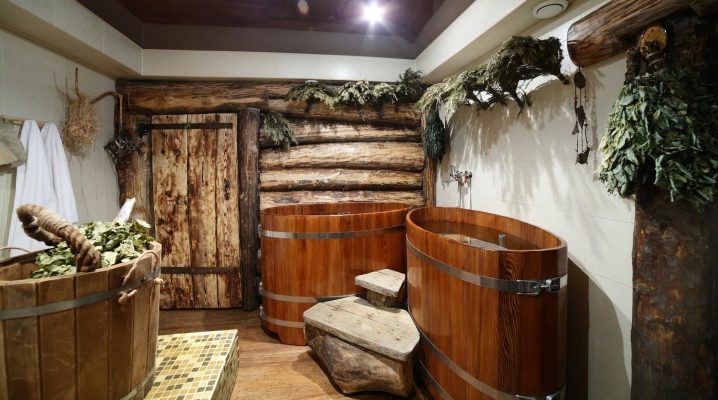
The Russian bath is one of the oldest and most useful traditions in our country, because for a long time the bath has personified a symbol of health, hygiene and relaxation. Of course, if we are talking about a house outside the city or a summer residence, it is impossible to imagine it without a bath, because the picture will be incomplete. To have a bathhouse on the site is the desire of every owner, and in this regard, questions often arise, what is the best way to build a bathhouse, how to design it, what features of its construction should be observed.
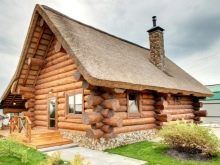
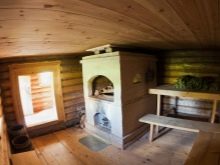
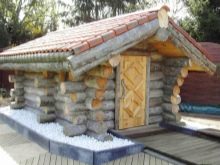
Peculiarities
First you need to decide what to build a bath from. A traditional Russian bath involves the use of wood materials, most often planed logs. In the old days, baths were built entirely of wood, and both the foundation and the roof were made of wood.
Coniferous and deciduous materials were considered the best. The pillars for the foundation, both in the old days and now, are made of larch, and spruce and linden are used to build walls and ceilings - they have the property of absorbing sounds and moisture. If you carry out competent and professional processing of such tree species as aspen or birch, then you can build a reliable floor, ceiling and walls from them.


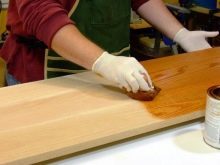
If the owner wants to build a budget version of a small-sized bathhouse on his site, then a wooden structure is the most profitable purchase. The price for a particular type of wood may vary depending on the region, but in general it will be quite acceptable. When choosing materials, it is important to consider how dense they are, the degree of porosity, strength and how they will keep warm.
If the wood is wet, then the life of the bath will be much shorter., because heat is retained much worse in a humid environment. To avoid this, it is better to choose a timber as a material, and revet the walls with double-sided planking. It is advisable to use planed, smooth and clean boards.
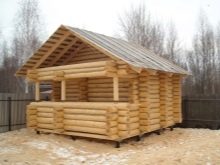
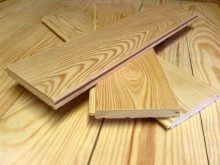

Wood can be combined with modern types of materials, for example, with bricks, which are often used to lay out the walls of baths. It is important to know that the brick must be either ordinary or perforated. It is impossible to use slotted and silicate types of bricks for laying out walls. In this case, the walls are finished with boards, and it is recommended to leave the gap between the wall and the cladding from 3 to 5 cm so that the board is well ventilated from the back side.

Another specific feature of dry wood material is its low thermal conductivity. due to the constant filling of pores with air particles. If the wood is moistened, the pores will be filled with water, and the thermal conductivity will increase several times. When water freezes in winter, it will become even larger (23-24 times), and when the volume of ice reaches a critical limit, the tree will begin to collapse. Hence the conclusion: you cannot do without reliable waterproofing protection when building a bathhouse.
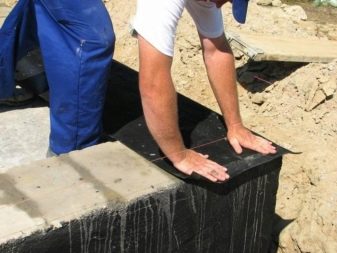
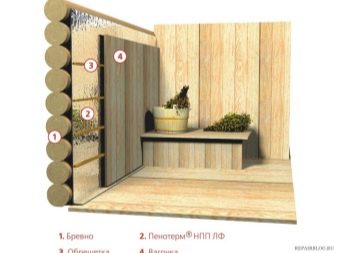
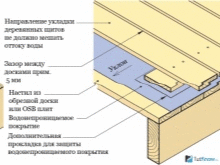


Bath walls can be laid in several layers of logs and beams. The main thing is to exclude serious heat loss in the room, ensuring good air exchange and tightness of the entire structure. When it comes to reliably finishing the walls from the inside, you should use moisture and heat-absorbing types of wood with a low level of thermal conductivity.
Coniferous beams or logs are carriers of unique and beneficial qualities. Firstly, they absorb steam very quickly, and a constant level of humidity is maintained naturally. Secondly, when the wood is saturated with steam and moisture, the release of aromatic substances from spruce and pine begins, which are beneficial to health and create an indescribable atmosphere. If round logs are used during construction, then their diameter should be from 20 to 25 cm, and they should be laid horizontally.
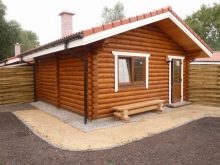

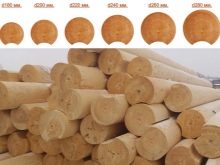
As a foundation for a bathhouse, ordinary or rubble stones are used. The foundation can be columnar (separate pillars-supports) or tape type (in the form of a continuous wall). When planning its installation, it is also necessary to think about what kind of thermal insulation materials will be used: concrete, wood, rubble stone or brick. As for the depth of the foundation, it is determined by the depth of the soil layers - the natural basis for its construction.

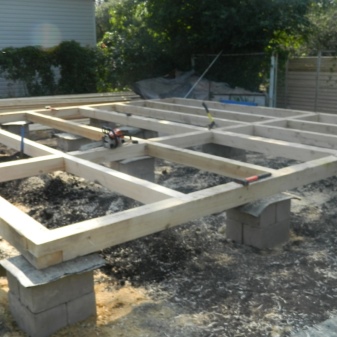
It is important to correctly position the stove - it must be installed in such a way that the steam escaping from it does not burn people. To do this, in advance, you need to take into account the peculiarities associated with the height of the ceiling in a Russian bath: it should be much higher than in a sauna.
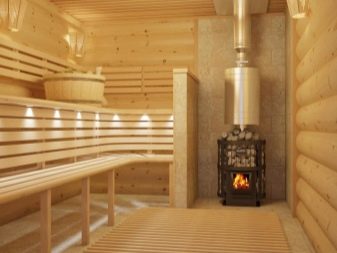
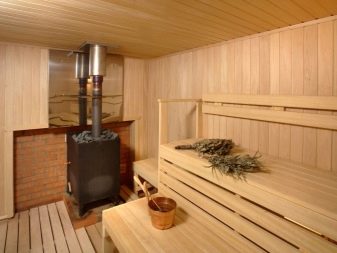
The best option for a stove is a heater.designed to be heated with wood for a long time. The stove should be installed in the room in such a way that all parts of the bath are heated evenly: the dressing room, the steam room, and the shower room. The furnace foundation must be laid at least 60-70 cm in depth, and rubble concrete or brick can be used as a material. It is important not to forget to leave a gap between the foundations of the wall and the furnace of a little more than 0.5 cm, and at the end of the work, fill it up with sand.

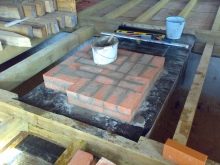
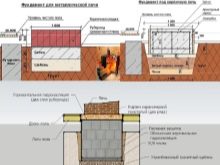
A feature of the construction of the chimney is that the chimney is laid out either from brick or from a solid asbestos-cement pipe 15 cm in diameter. If the roof has wooden parts, then they should be at the minimum allowable distance from this pipe - to prevent a possible fire.
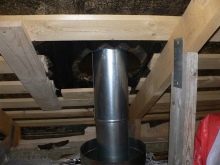

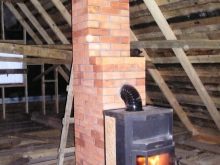
The main components of the ceiling in the bath are beams, insulation, filing and roll. A bar or board is used as beams or floors. They are cut into the very top of the log house or into the upper frame harness. The distance between the slabs can vary from 6 to 10 cm.
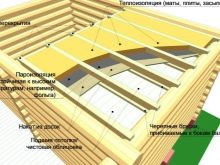
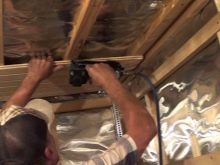
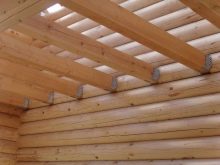
If the roof of the bath is gable, then the rafters are its main load-bearing elements. As you know, pitched roofs are of two types: with sloped and suspended ceilings. The appearance of the rafters will depend on the number of spans and their dimensions. All hanging parts must be firmly fastened to each other, because such a structure has only two supports. The rafters are made from dry and smooth coniferous beams.

Bath floors are made of wood or concrete. Concrete flooring with wood grating is commonly used for steam rooms and showers. For the dressing room, it will be optimal to lay the floor from wooden boards using insulation.
The bath floor also has its own characteristics. You can make it leaky or, conversely, non-leaky - it depends on the capabilities of the drainage system.
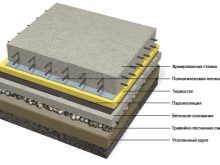
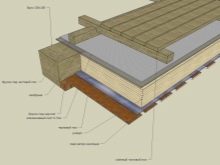

A non-leaking floor is made by laying boards on logs, which are preliminarily deepened into a layer of concrete or clay. The floor should be made inclined closer to the middle or in a one-way way, and there should be a groove under the grate to receive water. From the groove, water flows to the sump or to the sewer drain, if any. Installing a leak-proof floor system is very easy, but the disadvantage is that the plank floor will almost always be wet and the floors will be cool.
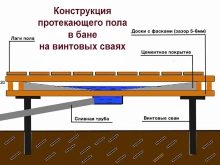

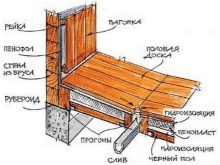
If possible, it is best to equip a leaking floor system in the bath. First, you need to cover the soil with a layer of sand and gravel, and then fill everything with concrete.In this case, the floor should be tilted towards the wall, where it is necessary to place a funnel, in which you need to install an airtight container that collects water. It is usually made of concrete or brick.
The essence of the method is that the first step is to build the capacity itself, and then the floor is laid - it is performed at the moment when the entire drainage system is already prepared. In addition, you need to prepare the foundation for the oven.
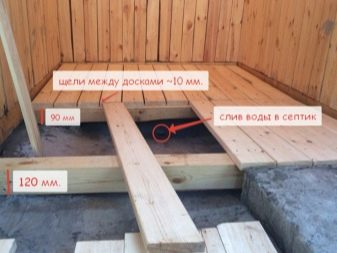
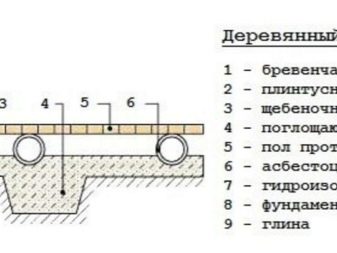
And the last feature that should be taken into account when building a bath is its ventilation. Of course, the bath will always be a zone of high humidity, so it is important to dry it well after use. The main thing is to ensure free air circulation under the floor to reduce humidity. To do this, it is imperative to install a blower in the oven, which should be located lower than the floor level itself. The blower can be combined with the underground using a tin box that should be easily removable.
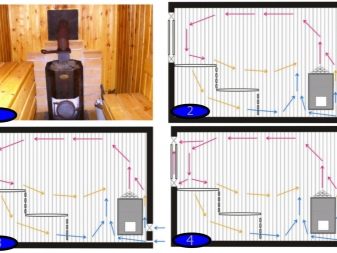
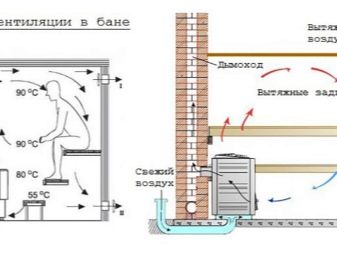
Materials for construction and decoration
One of the popular materials for the construction of baths is aerated concrete. It contains quartz sand, cement and converters. In order to increase the strength, the foam blocks are subjected to special treatment in autoclaves. This is nothing more than a stone synthesized by artificial means and having increased strength characteristics. It is convenient in that it is produced in the form of blocks of the correct shape - this significantly speeds up the construction process.
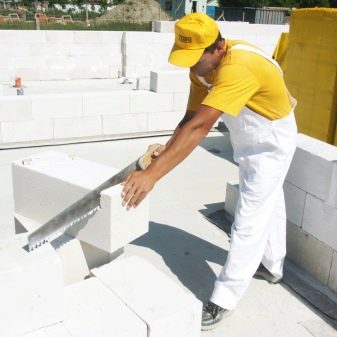
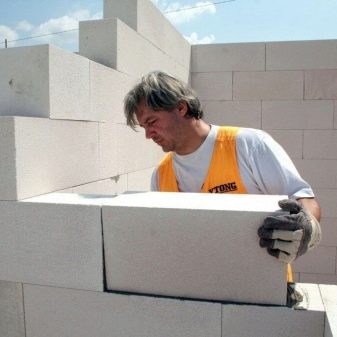
The main advantages of aerated concrete blocks are increased strength, fire resistance combined with lightness both in weight and in handling. Among the disadvantages, it should be noted that such material can strongly absorb moisture and accumulate it inside. In order to reduce the level of hygroscopicity, certain additives must be included in the foam blocks. Also, if you plan to use this type of material, it will be necessary to take steam and waterproofing measures.
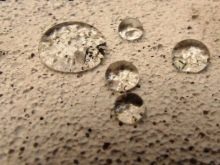
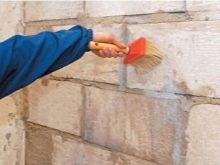
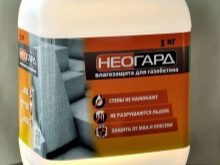
Aerated concrete blocks should be laid on a special adhesive that visually resembles cement. The cement mortar itself cannot be used during work, because the material will absorb it very quickly, become wet, and its thermal insulation properties will quickly deteriorate.


One of the cheapest ways to quickly build a bath in the country is to use frame building materials. Bath houses are built quickly, they do not require a heavy foundation. All elements are light, the level of thermal insulation of such a structure is quite high, and you can assemble a frame bath three times faster than a brick one. On average, its construction will take no more than three weeks. It is possible to build such a building regardless of the season, even if it is winter outside and the air temperature is below ten degrees.
The walls of frame buildings are made of high quality material that is safe for humans and the environment. It provides good air circulation, so that the house is never stuffy, and the microclimate inside is light and pleasant.

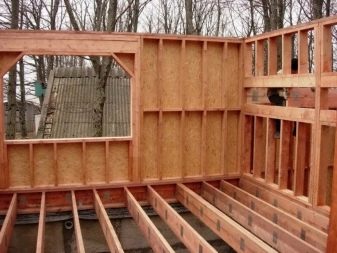
This design is not devoid of disadvantages: usually the building "shrinks" in the first two years by ten centimeters, and in order to prevent further shrinkage, you will have to use materials that can provide the so-called chamber drying. Also in the house it will be necessary to additionally insulate and decorate the walls. The frame price is certainly very attractive. But after the interior and exterior finishes are completed, it will not be difficult to understand that the total cost of materials and work will not be much cheaper than installing a bath from logs or timber.
It should be borne in mind that choosing the right type of insulation will not be so easy, because neither mineral wool nor foam insulation is suitable for a frame bath - you will have to look for a moisture-resistant option that is least susceptible to fire.

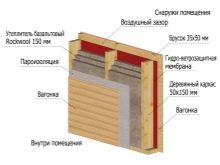
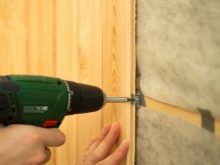
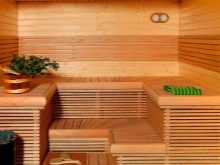
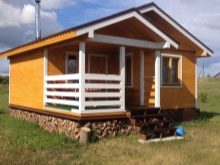
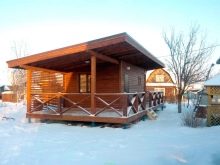
A brick bath will cost much more, but its service life can be up to hundreds of years or more, in contrast to wooden buildings. Brick is a refractory material, and visually such a bath looks no less attractive and cozy than a wooden one. However, such a durable material also has disadvantages: first of all, you will need a solid tape-type foundation, which will be associated with both time and additional financial costs. During the heating, a brick structure heats up much longer than a wooden one. For example, it will take no more than 1.5 hours to heat a sauna house made of wood, and much more time and fuel will be needed to warm up the brick.
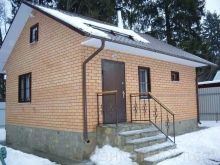
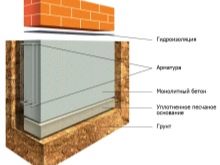
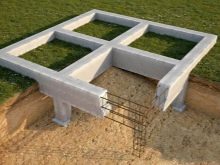
When building a brick bath, it is important to think over not only the arrangement of the foundation, but also a good ventilation system, because the brick "breathes" badly, unlike wood or frame construction. In addition to the high price, the construction period itself may be delayed for a while, until the foundation dries out and becomes strong. The laying of walls will be the same time consuming.
Despite these difficulties, many owners prefer brick - it looks beautiful, lasts a long time and is resistant to fire. For construction, a red material and a high grade cement mortar are usually chosen.
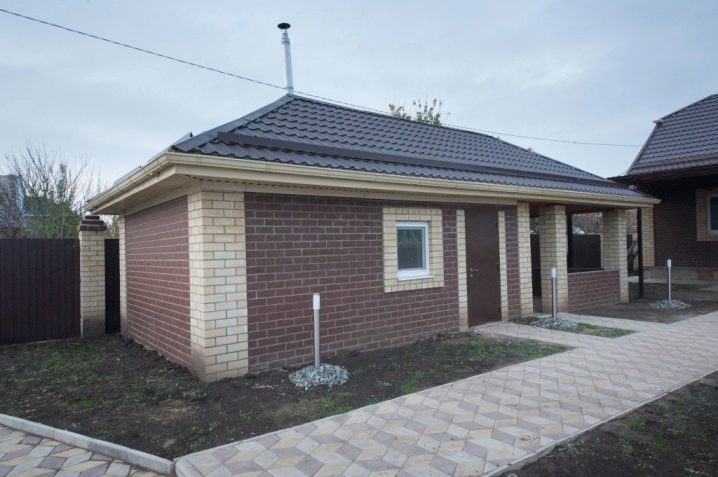
The brick bath is insulated only from the inside, so as not to spoil the beautiful view from the outside.

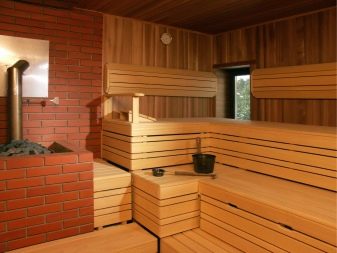
A bath can also be built from expanded clay concrete, which is a monolithic material. It includes expanded clay and cement. Expanded clay concrete is characterized by the absence of toxicity, low moisture absorption and low weight. This is very convenient during construction, since a heavy strip foundation is not required. In addition, it is not possible to insulate such a bath as thoroughly as an aerated concrete one.
Expanded clay - the material is more durable and durable, and as its main advantage, it should be noted that it does not shrink. In addition, for laying, it is allowed to use ordinary cement mortar or special mixtures based on glue. Insulation, which is usually used as basalt wool with a dense layer of foil, is laid on the inside. Be sure to leave a distance of 2.5 cm between the insulation and the wall for air circulation.
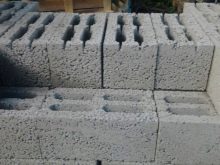
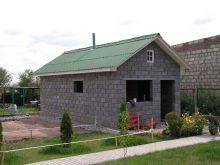
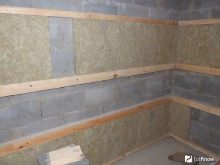
One of the cheapest building materials for a bath is a cinder block. It is formed after pouring burnt sawdust, coal and other substances with concrete. It is a non-flammable and easy-to-use option with a long operating period, which can be up to 50 years. The cinder block is inexpensive, on sale it is represented by a wide selection of materials, so it can be considered in the case when financial opportunities are limited.
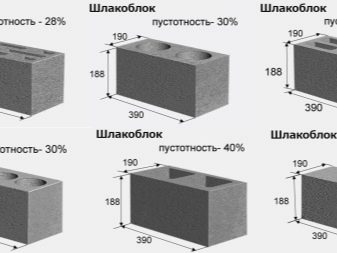
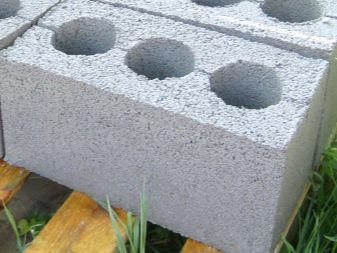
The specifics of the cinder block should also be taken into account: like any porous substance, it strongly absorbs moisture, so waterproofing measures will be required unambiguously. Thermal insulation will also be needed - inexpensive blocks do not differ in their ability to retain heat. Before buying cinder blocks, it is important to consider the main point: after manufacturing, they must be in an open space for at least a year. This is necessary so that harmful substances disappear from them. Of course, this is not the best option for building a bath, but in some cases its use is also allowed.

Wood is one of the most acceptable and traditional options. It is known that tree species are different, and not all of their representatives are used in construction.
To have an idea of which tree is best to build a bathhouse, you can consider the main tree species.
- Pine. Has natural protection against bark beetles and molds. It is easy to find in retail, has a moderate cost, but for a bath it is not the best option, since when heated to high temperatures, the pine “cries” and always needs additional processing with special means to avoid rotting.


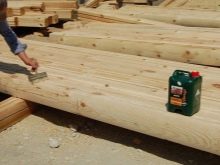
- Linden. Well suited for a bath, easy to process, resistant to steam and high temperatures, which is important. Does not like moisture and tends to darken quickly if not varnished.

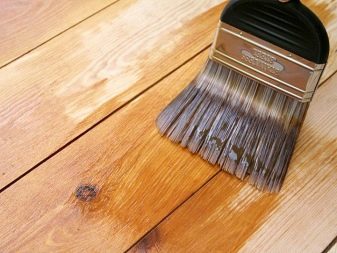
- Aspen. It has an advantage over a linden tree in that moisture is absolutely not afraid of it. Almost does not shrink, and if it does "shrink", then it does not have any cracks.Long-lasting, has excellent color qualities. It is distinguished by its high cost and complexity in processing, since the density of this breed is very high.


- Fir. It is better not to use it when erecting wooden buildings, because it quickly decays and does not differ in strength.

- Alder. Despite its widespread use, it is expensive, like aspen. It has an excellent color scheme: it can be orange and brown. The shrinkage is very small, the rock is easy to work, therefore it is suitable for building a bath. Among the shortcomings, it is worth noting that such material can rot and darken after a few years, so it is necessary to provide for the possibility of special processing.

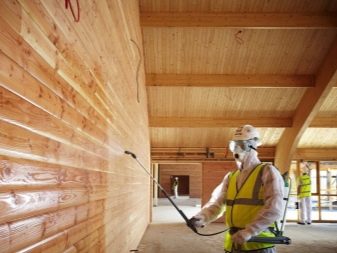
Tree speciessuitable for the construction of baths, can be clothed in two basic forms: logs and beams. The log house is considered to be a material of high environmental friendliness. It does not need any finishing, because the logs themselves always look great, even in their raw state. If we are talking about a cylindrical log with minimal gaps in the area of the rims, it can be guaranteed that the thermal insulation properties will be high in themselves. During the construction process, the logs can be connected at any angle, which allows the most daring design ideas to come true. Disadvantages of the material: tendency to cracking, twisting and the possibility of high shrinkage over time.
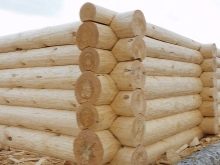


The beams are solid or glued and in their characteristics almost do not differ from logs. The performance indicators for both types are good, especially for glued beams: during their manufacture they are impregnated with antiseptics and fire-fighting substances. However, solid timber is higher in terms of environmental safety.
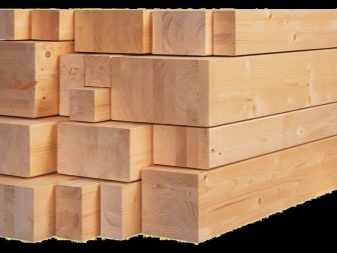

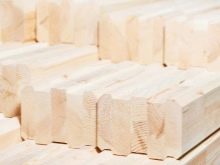
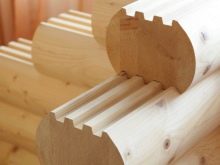

Arbolite can be considered a good option for an inexpensive bath. It has been used in construction for a very long time and has been widely known since Soviet times. Arbolit is a complex of wood waste that has been processed in special machines and then filled with a solution - cement with the addition of calcium chloride or glass. Such a solution gives wood concrete strength and low thermal conductivity.


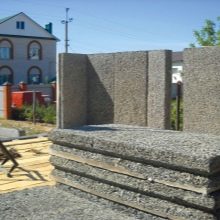
The material has the ability to maintain a comfortable temperature in the bath, and is environmentally friendly. If the wood concrete blocks are of good quality, they are ideal for building a bath. As in the case with other budget options, waterproofing and a good ventilation system will be required here, and the outer walls are best lined with lining.
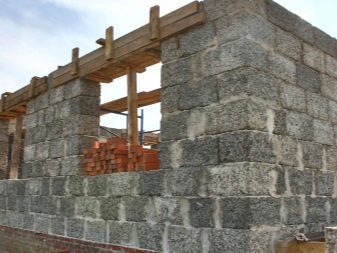
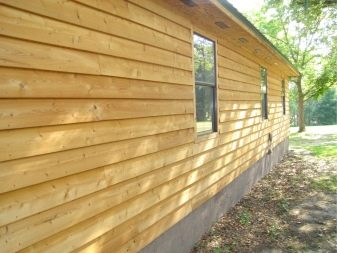
As materials for providing vapor and waterproofing, polyethylene film, aluminum foil or with the addition of fiberglass are used. Also, in some cases, the use of glassine and roofing paper is allowed. However, if there is a high temperature in the room, the roofing emitting a substance with an unpleasant odor. Since the bath is a place where the temperature is always almost high, you should not use roofing only for waterproofing. It is possible to insulate surfaces with another material by placing it on top of the insulating layer - under the wood sheathing inside.
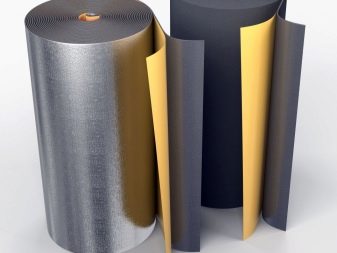
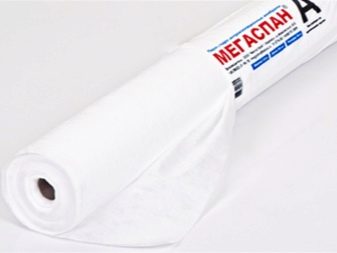

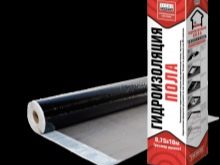
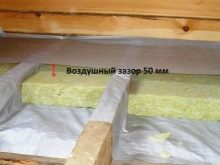
The roof of the bath can be covered with different materials. One of the most common is steel designed specifically for roofing. It is sold in sheets, the thickness of which ranges from 0.5 to 1.5 mm. Steel sheets can be zinc coated or sold uncoated. If the steel is galvanized, the roof will last longer, but it is more expensive and needs constant maintenance.
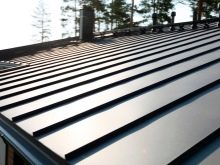

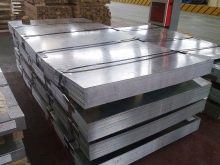
You can get by with a more budget-friendly roof option by making it out of metal. It is lightweight, resistant to high temperatures, does not burn, and can be shaped to any desired shape.
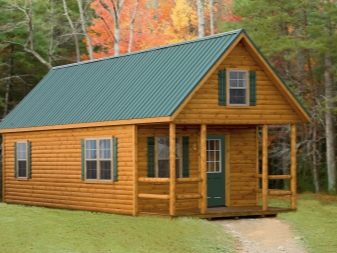
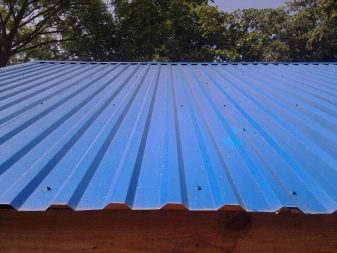
Another option is steel without zinc coating, which the builders call "black". Before working with this material, you need to remove the factory grease from it, and if there is rust, then be sure to get rid of it.The grease is removed with a rag, which you just need to moisten in gasoline, and then apply drying oil to the surface, adding paints to clearly indicate all the gaps.

For a roof made of simpler metal, you will need a cobble sheathing or boards. Both the one and the other material fit with a distance of no more than 20 cm. You will need strips from 10 to 12 cm in width in order to place them under the folds, located in a horizontal order. Between these folds, it is allowed to leave gaps of up to 14 cm, and if the crate is solid, then a roofing material flooring is ideal under it, which, absorbing moisture, will prevent corrosion of metal surfaces.
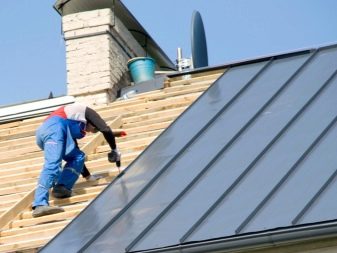

The roof can be covered with roll materials. Their advantage is that working with roofing material is technically much easier than with metal. Tol, as already mentioned, it is better not to use it or use it as a temporary option. If you carefully lay the roofing material in 3-5 layers, then such a roof will serve no less than galvanized steel. In addition, roofing material is much cheaper.
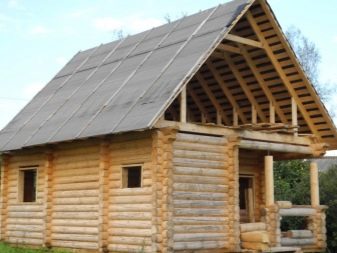
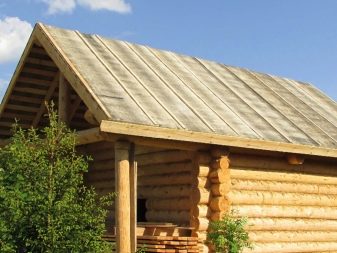
However, it has one significant drawback - it is instability to flame, therefore, if it is planned to cover the roof with roofing material, safety precautions should be observed more carefully. It is important to know that the base for roofing material should be as even as possible, and the work itself is best carried out in dry, warm and calm weather. Before placing the material, all rolls are rewound in the opposite direction.

For multilayer laying of roofing material, it is better to use a fine-grained material as an inner layer, and lay a coarse-grained canvas outside. Mastics are used as fixing and adhesive, which can be hot or cold. For roofing material, both types of mastics are suitable.
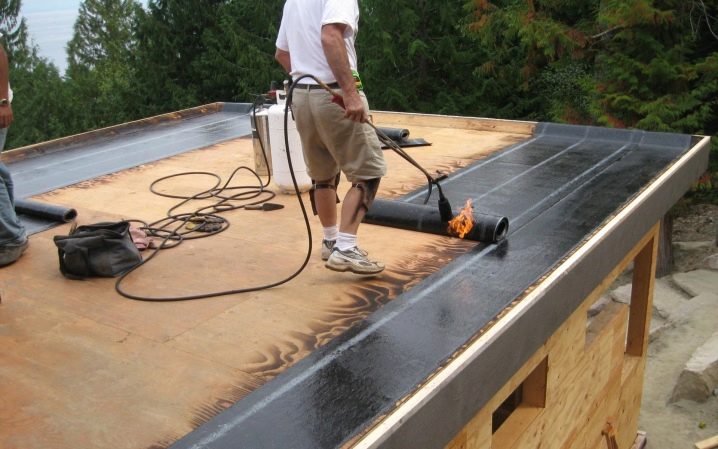
An old and inexpensive method of slate covering is still used today for finishing roofs. The disadvantage of slate is its relatively short service life, which varies from 30 to 40 years. Slate is a corrugated sheet made of asbestos cement. Its positive features are that it is lightweight and, unlike galvanized steel, does not need to be carefully looked after. In addition, resistant paints fit perfectly on the slate, so it is possible to paint the roof in the color that the owner of the bath likes the most.
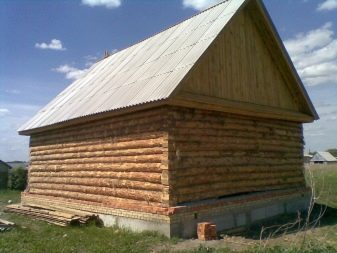
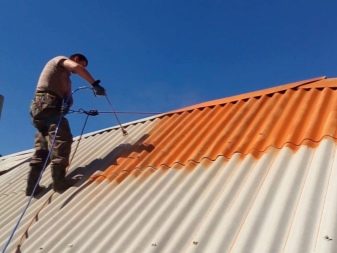
A wooden lathing is used as a basis for a slate roof. The first sheet is laid with a cord orientation along the entire slope, from the eaves - without cutting corners. Using a drill, the crest of the second wave of slate is drilled - the hole should be 2 mm larger than the diameter of the nail, and the sheet itself is nailed to the cornice. At the same time, slate nails are not achieved at a distance of 3 to 5 mm, but they must be nailed with gaskets made of roofing material. It is allowed to lay slate both longitudinally (from below, upward) and transversely (from right to left).
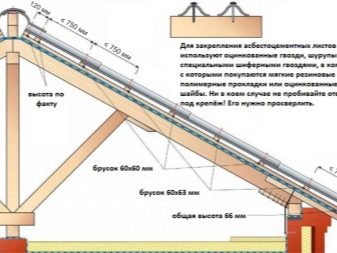
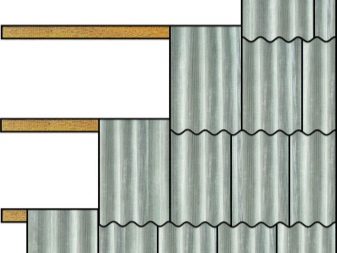
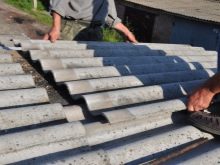
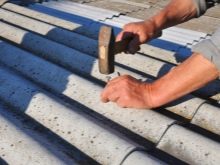
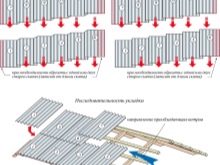
How to calculate the amount of material?
You can calculate the amount of material yourself, but at the present stage it will be easier to use an online calculator that will help you make all the necessary preliminary calculations. To do this, you will need to fill out the form that is proposed, having previously determined the basic materials for the walls, roof and cladding.
The online calculator is best used when the bath project is ready.

When calculating the amount of materials, a calculator can be a good help., however, you should take into account some of the subtleties associated with the foundation of the bath, since it is the base of the building that bears the main load, and how long the bath will last and how strong it will be depends on it.If it is planned to erect the most time-consuming strip foundation in the manufacture, then the main building materials will need to be supplemented with a bar and edged boards. The tape structure is not so difficult to implement, but the consumption of materials will be higher: edged boards for formwork will need to be purchased with a margin of at least one more cubic meter. In order to correctly and reliably assemble the formwork, you will need about 3 kg of nails, and for waterproofing purposes, you should purchase at least two rolls of high-quality roofing material. A tape-type foundation is poured with a concrete solution in an amount of 6 cubic meters. m and more, depending on the length of the base of the bath.
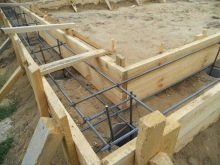
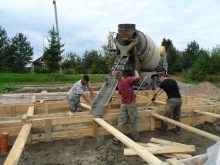
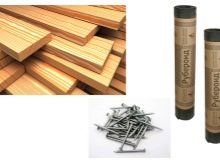
Depending on the characteristics of the soil at the site, the construction of a strip foundation may not be necessary. The expenditure of funds for construction, in this case, is colossal. For comparison, you can "estimate" in advance how many materials will be required in order to build a simpler columnar foundation. Much less concrete solution is required here: about 3 cubic meters. m, and roofing material may be enough in the amount of half a roll (to cover the upper concrete layer). Edged boards for such a foundation are not needed, except that small scraps can come in handy, and even then not always.
When calculating, you also need to take into account the consumption of protective equipment with which it will be necessary to cover the wood if the bath is being built from it. The consumption of a fire-retardant agent averages from 90 to 140 g per 1 sq. m of construction.
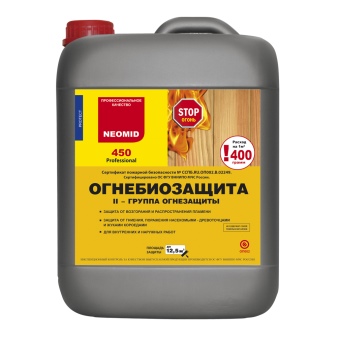
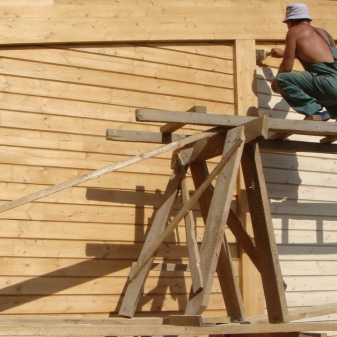
We develop a project
It is not difficult to develop a project for a Russian bath - it is most in demand in the conditions of Russian reality, which is due to the cultural characteristics of our country. A centuries-old tradition has formed a whole institute dedicated to the Russian bath. Of course, among our compatriots there are fans of Turkish baths and Finnish saunas, but they cannot become the source of that unique aroma and atmosphere for which a real Russian bath is famous.
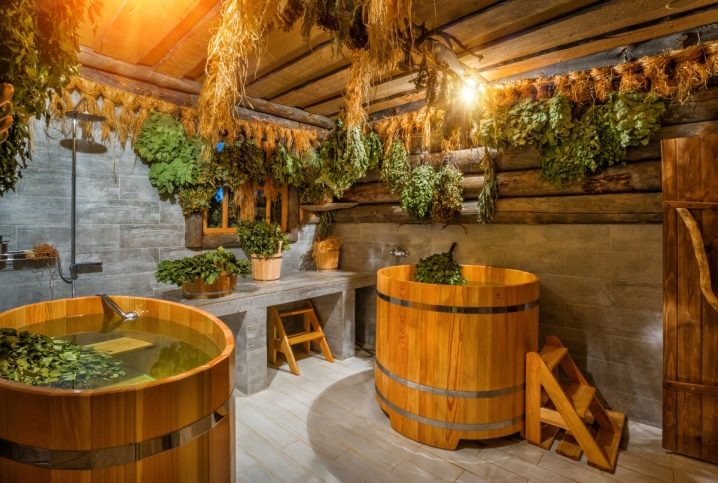
Any project of a Russian bath is universal in that it can be realized with your own hands., without the help of professionals. It is known that such a structure made of wood in the old days could be built by every adult man in the village. At the present stage, the task is greatly facilitated by the fact that manufacturers themselves complete almost finished baths, the materials for which are traditionally beams and logs. After delivering them to the right place, only the assembly remains, as a result of which a bath is obtained, completely ready for use. Assembly time is no more than a day.

The unique features for which the Russian bath has always been famous can only fully manifest themselves if all the rules for the construction of the structure have been fully observed. The classic and simplest project involves only two parts: a dressing room and a steam room. It is precisely because of the small area that the steam room can always be heated to the desired temperature, and with a minimum consumption of funds for fuel. If there are only two rooms in the bath, this will create better air circulation. Their temperature is ideally around 70C at 100% humidity.
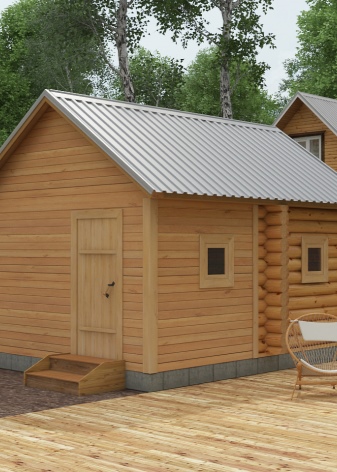
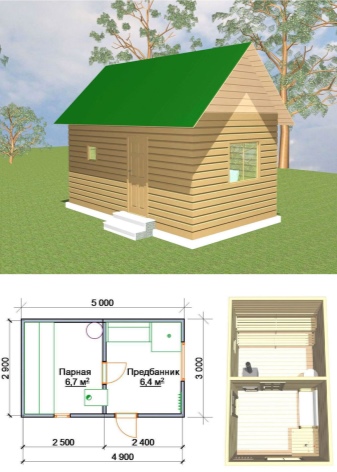
As has been mentioned many times, the best materials for construction are logs or beams. The external design of the bath, its location near the house, as well as the type of foundation will directly depend on the quality of the tree. In addition to wood, bricks or foam blocks are often used in the construction of Russian baths. Monolithic concrete should not be used, because it will be impossible to completely warm it up. A concrete structure is allowed to be built only if people are planning to live nearby in a small guest house, or the project includes another building on the site in an ensemble with a future bathhouse.

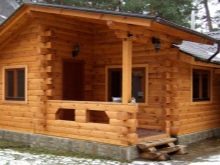
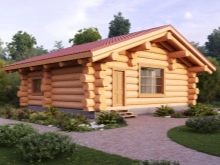
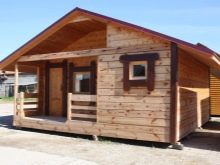
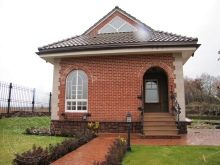
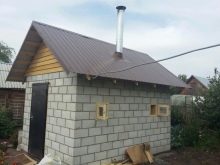
Regardless of whether the owner of the site plans to build a bathhouse on his own or turn to professionals for help, you need to think in advance about where it will be located. In this case, a large number of subtleties should be taken into account, for example, such as the total area of the land, and at what level the groundwater lies here - the strength and long-term service of the future structure depends on this.
From the point of view of professional builders, a bath house is best built on the banks of a river or lake., but in this case, it is imperative that the bath is located on a dais. It is known that during a water spill during spring floods there is a risk of flooding of any structure on the shore. If the site has a reservoir and a suitable hillock, you should also take care of the slope of the water runoff: it should not be located towards the river in order to avoid its pollution with sewage.
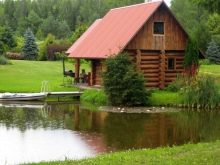
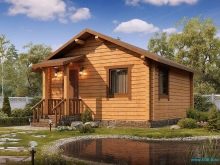
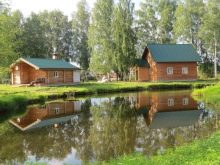
The windows in the bathhouse should traditionally face the west, due to the fact that there is always more sunlight on the west side. The Russian bath is a building with only one window located in the dressing room. If you want to design a house with a large number of rooms, it is allowed to make two windows, but no more.
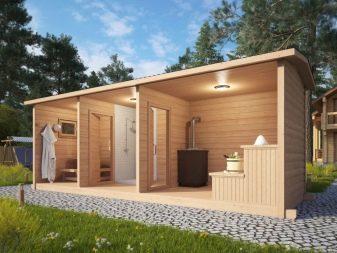
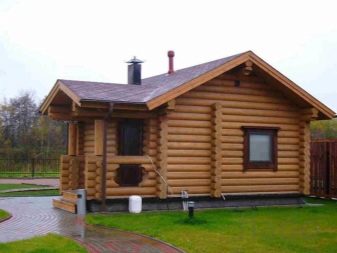

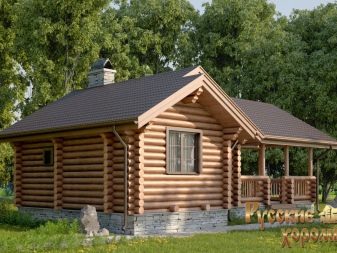
An equally important point in the design of a bath house is the fire safety rules. There are standards that strictly stipulate the distance from the bath room to the nearest house or houses on the site. Of course, if the owner has a small area, then it is worth considering the option of an ensemble of a residential building with a bath room. The door to the bathhouse should be located on the south side due to the fact that there will be much less snow here in winter, and on the north side it is necessary to arrange a good drainage system for melt water.
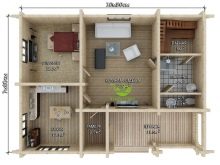
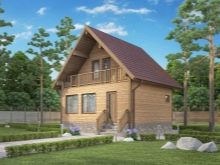
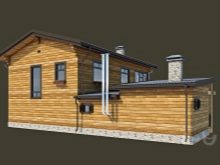
The next important design step is a potential bath heating system. It is now possible to heat it in different ways: along with wood heating, gas heating is often used, as well as electricity, coal and even fuel oil. Of course, wood heating will be the most preferable. On Russian soil, the bathhouse has always been heated with wood, and they are inexpensive. However, there are two significant disadvantages here. Firstly, this method requires that the person throwing the firewood be present almost constantly, and secondly, it will require a place to build a small shed where the woodpile could be stored.
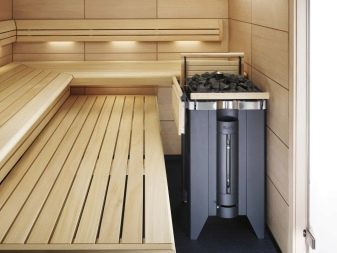

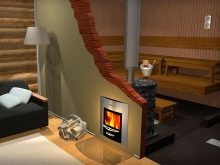
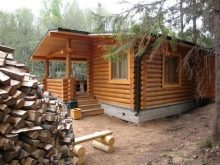
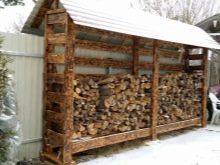
The good thing about a gas heating system is that a boiler installed in a bathhouse can work smoothly for a long time. It is not required to throw firewood into the firebox, so this heating option can also be considered. It is less traditional, but more practical and lightweight.


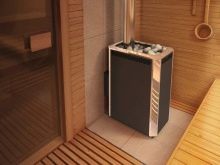
If, nevertheless, it is planned to install a stove in the bath, then it can be made either from brick or from heat-resistant metal. The brick stove will be impossible to move, moreover, it is designed for good heating of one, and maximum of two rooms. The metal stove can be moved to another place and, thus, it is possible to warm up several rooms. However, a brick structure is better suited to fire safety measures, which, unfortunately, cannot be said about metal, which can become a source of ignition.

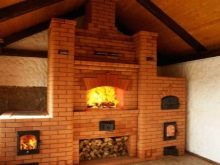
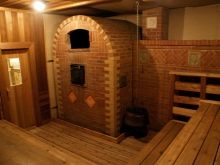
Any of the proposed heating methods has its own nuances., and its application depends only on the conditions on the site. Gas heating is more environmentally friendly because there are no emissions that can be harmful to the environment. However, in spite of the laboriousness of the process itself and the storage of firewood, it is the wood-burning method of heating that creates a wonderful atmosphere of a Russian bath, because the wood, when burned, emits a special smell.
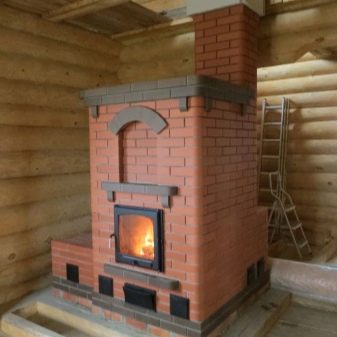
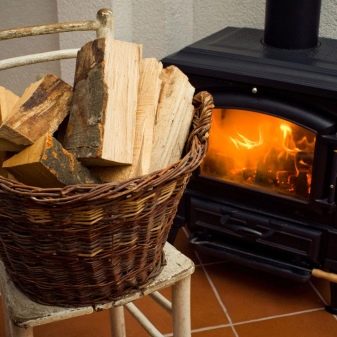
Depending on the material chosen for the bath, it can be assumed whether it needs additional finishing. For example, if the material is sanded or rounded logs, finishing is not needed, which greatly simplifies the situation.The logs are simply varnished, and such a structure looks very stylish and pretty. If the bath is built from a bar, then finishing with lining, tiles or siding will already be required (they can also be used to decorate a brick bath).
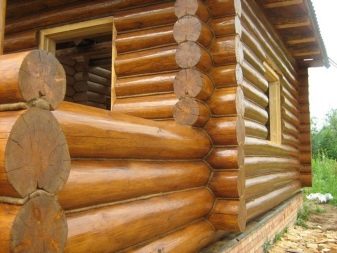
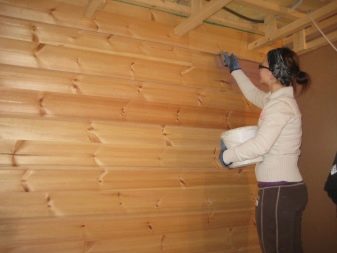
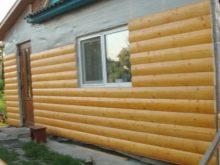

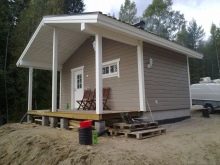
To have a visual idea of how the future bath will look like, you can create a three-dimensional version of the project. Thus, it becomes possible to correct certain points in order not to catch oneself already during the construction process. If the project is developed in detail in advance, then this will simplify the entire course of construction, and will allow it to be carried out as soon as possible.
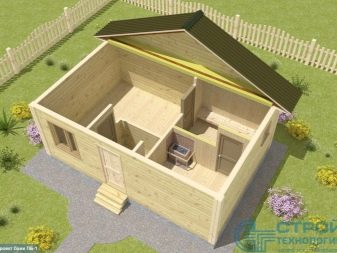

It is equally important to determine in advance the dimensions of the bath rooms: steam rooms, dressing rooms and washing rooms. It is advisable to plan the main dimensions so that there will be from two to five people in the house at the same time. The bath is a place not only for taking water procedures, but also a recreation and communication area. If it is not planned to combine it with the house, the total area of the bath house should be at least 10 sq. m.

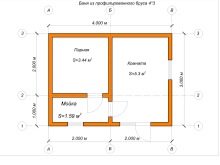
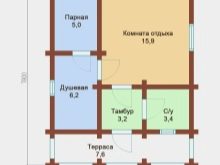
As for the size of the steam room, its optimal parameters are from 6 to 10 m2, and the washing and dressing room is 6-7 m2. It is desirable to have a small vestibule that will not let the cold air through in the autumn and winter seasons. In small baths, washing rooms are often combined with steam rooms, but if the premises are planned to be built separately, then the presence of a dressing room is mandatory. It will need to be insulated according to all the rules, and it is advisable to design the window with a high window sill at least 150 cm above the floor level.
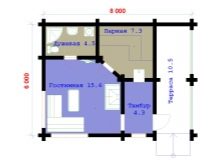
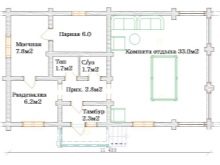
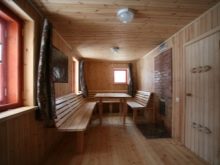
The dressing room should have enough space for hangers, coal and firewood, and right behind it you can design a shower room.
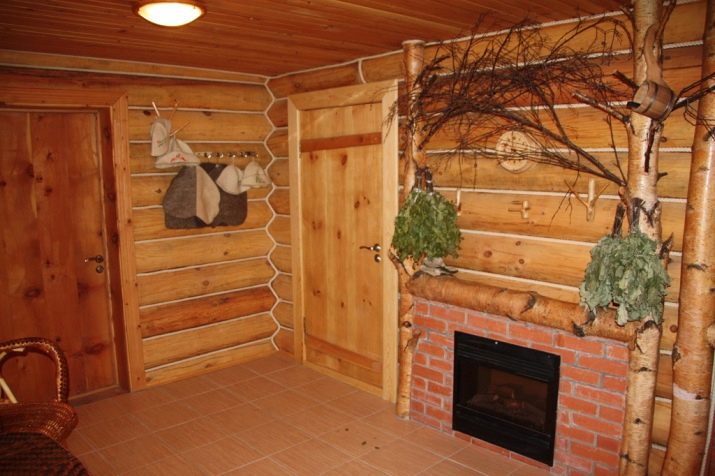



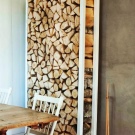
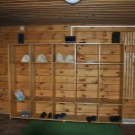
Tips & Tricks
Regardless of whether the owner of the site plans to build a bathhouse on his own or turn to professionals for help, there are a few tips that you might find helpful.
- Before starting the main work, you should organize the process in such a way that the first stages of construction are as simple as possible. We are talking about the foundation, which does not always have to be heavy and monolithic - the types of soil on the site are always different. It is likely that you can limit yourself to a simpler foundation option, thereby saving both effort and money.


- Before making calculations and starting construction work, you should clearly define all the materials so that later there are no unnecessary calculations.


- Any construction should start with a clear idea of what kind of bath room will be optimal for the family and its guests. The bathhouse can be built "in haste", very simple, or it can surprise with its dimensions and convenience, while it consists of several sections, where the shower room and the steam room are separated from each other. When planning a large bath, it is advisable to design a summer terrace in advance as an extension.
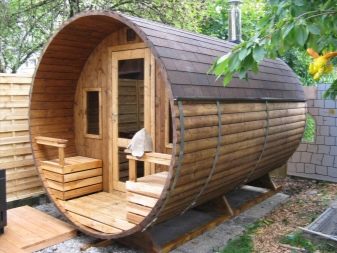

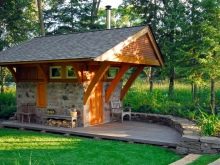

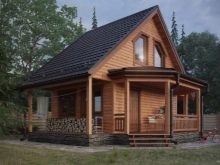
- If a decision is made to build a small wooden bathhouse on its own, then at least one person who is well acquainted with the craft of a carpenter must be present in the brigade. Good wall-cutting skills and a well-trained eye are indispensable here.
- The project must clearly indicate the location of the future bath in such a way that it does not cause inconvenience to the owners of the site under the conditions of its small size.

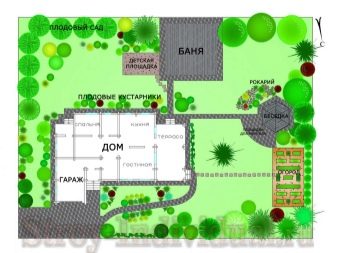



- If the bath is being built as a free-standing house, then it is important to take into account such a concept as the relief of the land in order to provide for the possibility of water flow. If possible, then any suitable soil slope should be used for this.
- The best option is always the location of the bathhouse together with a residential building - this is convenient, functional and comfortable.
- When planning the location of the bath, it is imperative to take into account the wishes that the neighbors can express so as not to cause them possible damage.

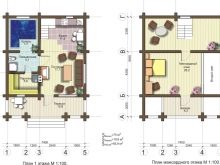

Beautiful examples
The classic and most popular option is a wooden building that can be placed next to the nearest body of water. Baths made of rounded logs, processed with the help of special highly environmentally friendly compounds, look especially beautiful, and if you decorate the roof elements with carvings, this will create an indescribable atmosphere not only in the bath itself, but also outside.
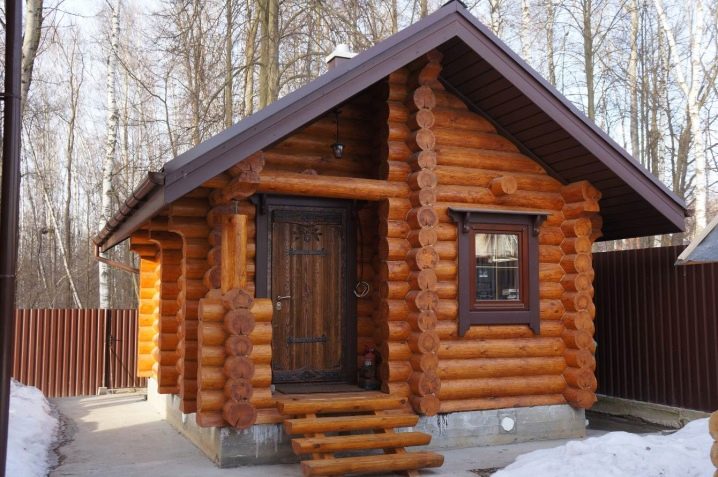
Bathhouses built of beams look much more modest and less “fabulous”, but beams, both glued and profiled, are much cheaper than logs. It is technically much easier to build a bathhouse from beams, and in modern conditions such an option can fit into any situation due to its more neutral appearance. The timber is widely used in those cases when there is a desire to build a small, but "atmospheric and traditional" bathhouse made of wood, the qualities of which would be preserved as much as possible.
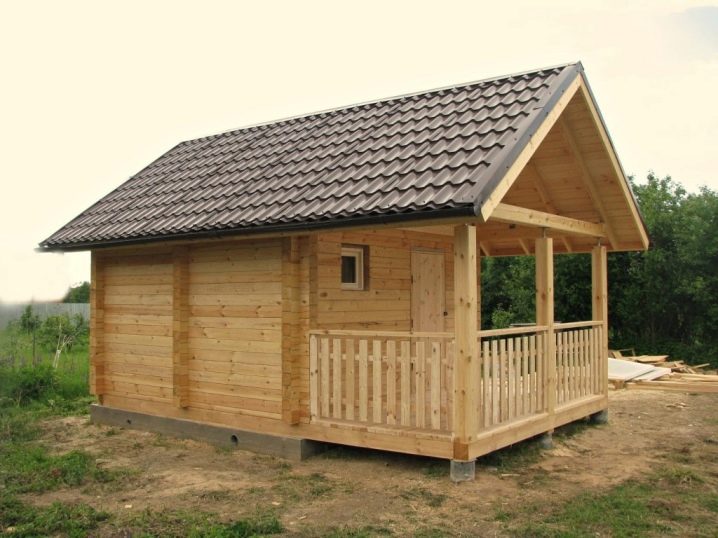
If there is a desire and opportunity, you can design and build a very original type of bath with a barbecue oven. At the same time, the barbecue room itself is located in the same complex with the bathhouse and looks like a spacious terrace. The "highlight" of such a project is the built-in stove, which on one side faces the bathhouse, and the other is intended for barbecuing and additionally heats the recreation area, especially in the cool season.

A bath with a pool is a less original project, but it is much more in demand. If you correctly plan a small pool without equipment for a heating system, then its cost will be acceptable. Of course, it will be possible to use such a structure only in the warm season, but the idea itself is embodied much easier than it might seem at first glance.
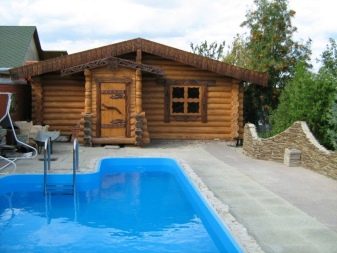

The recreation area with a sauna can be equipped in the form of a small complex, which will include a room for playing billiards. As a rule, when planning here, it is worth starting from the minimum size of a billiard room of 20 sq. m. In this case, the bath area should be located on the first floor, and it will be comfortable and convenient to play billiards on the second floor, which is recommended to be made in the form of an attic.
Many people ask about what to do if there is not enough space on the site, and I really want to build a wooden bathhouse, traditionally heated with wood. In order to save space as much as possible, while taking away a place for storing firewood, the woodpile can be attached directly to the steam room. Nicely and neatly folded firewood will look very authentic and cozy - the owner will receive both a simple design solution and saving usable space.
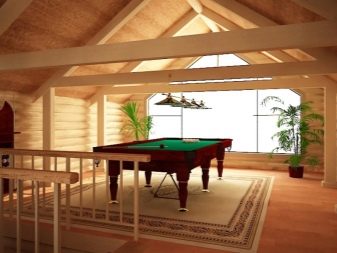
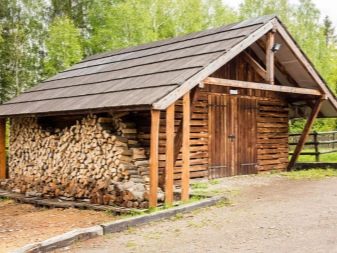
Even on six acres, you can equip such an original solution as a barrel-shaped bath. Finland is considered to be the homeland of the barrel-bath, but, given the Russian realities of small land plots, such a "portable" bath is becoming more and more in demand. The shape of the structure ensures its rapid heating, and the heat is retained for an optimal amount of time.
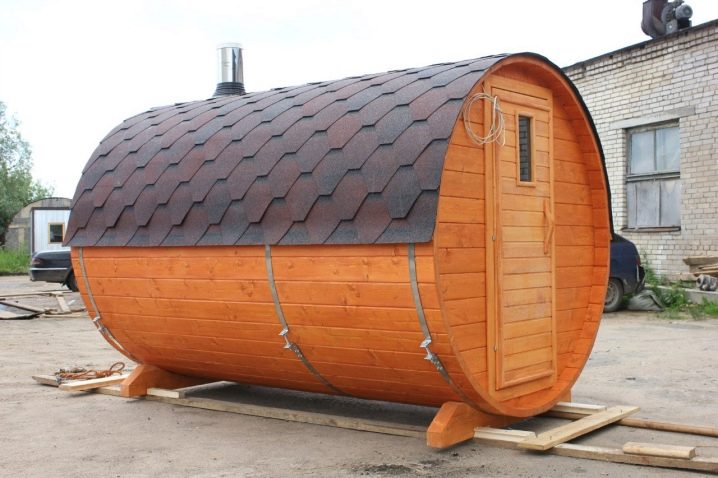
Any type of bath, regardless of the size of the building, should also differ in its harmonious appearance. Of course, in the first place should be the quality of the construction of the structure and its correct location on the site, but you should not neglect the aesthetic characteristics either. It is best if the bath is well combined with the overall picture of the surrounding space, organically fitting into it and without creating the impression of visual discomfort.

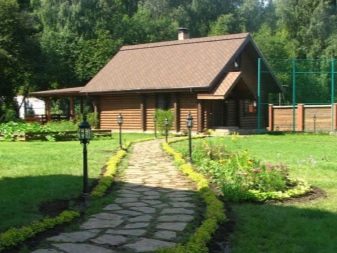
It has been repeatedly said that the most beautiful baths are often built from logs or beams. At the same time, the correct choice of wood materials becomes an important factor - they must be identical in thickness and color, because, otherwise, the quality of the structure will leave much to be desired, and the building itself will look unsightly and strange.
When building a bath from modern inexpensive materials, it is important to take care of the quality and design of the wall cladding. both inside and outside. Cinder block or brick is best tiled with siding or tiles, which will give the room a finished look. Siding is one of the modern cladding options that carries a certain element of rigor and simplicity.
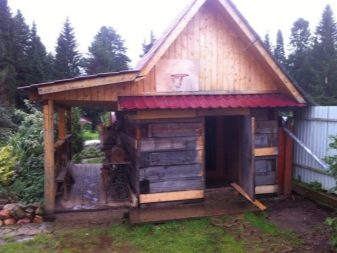
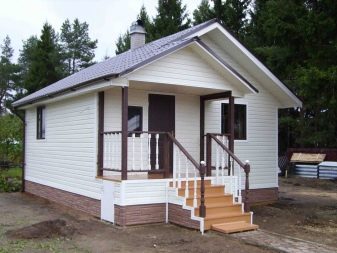
It is also important to think over how the bath will be illuminated outside and inside. Good and thoughtful lighting techniques can highlight the features of any structure, even the smallest, of course, only if it fits organically into the surrounding space. A great option is luminaires with LED lamps. A wide selection of them allows you to choose the optimal kit that is suitable for any type of building.
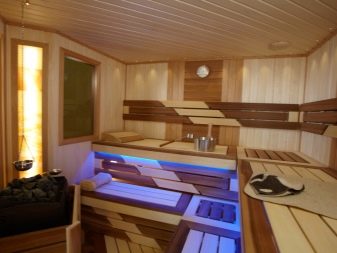
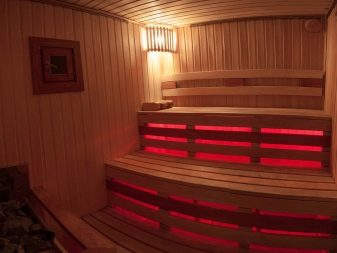
Decorative lamps of different colors are ideal as additional lighting. Thanks to this opportunity, the owner can present his bathhouse to the guests like a fairytale house. Of course, street lighting should not only be beautiful, but also meet the requirements of moisture and heat resistance. As for the lighting inside the bath, the light should be dim, dim and calm - this is the best way to promote relaxation and rest.


The interior design of the bath is a space for the most daring and original ideas. For example, if an old large-sized iron watering can is lying around in the country, you can build a wonderful shower from it by hanging it on the wall in the washing room. The watering can can be left in its original form, but you can also paint it with acrylic paint of any color, thereby giving it a second life.
Old wooden barrels shouldn't be thrown away either. - if the tree is in good condition, from such a barrel you can build anything for the bath, from a picturesque washstand to original pieces of furniture in the recreation area, which is located next to the bath room. If you wish, you can build a semblance of a funny little pool from the barrel by filling it with water and placing it on the street next to the steam room.
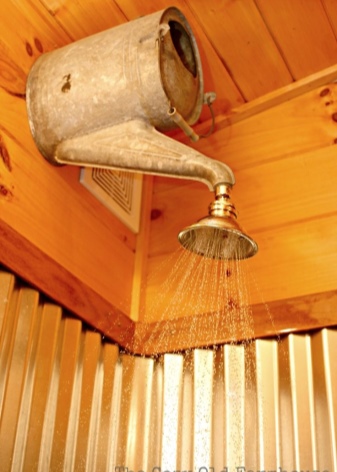
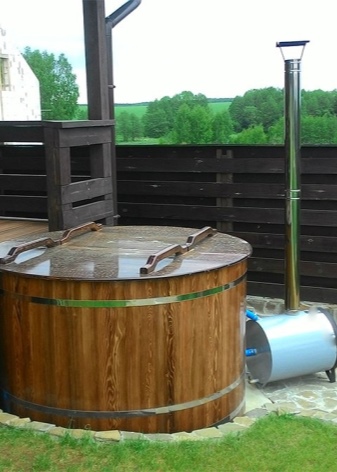
An old tin gang with two handles, even if there are traces of paint or rust on it, can become not only a wonderful art object, but also turn into a real lampshade for a kind of lamp. The main thing is to supply electricity correctly and hang this wonderful chandelier as reliably as possible. Leaky gangs also do not need to rush to throw away - if they are well cleaned and secured against the wall, then you can get an excellent shelf for storing towels and other bath accessories.
If deer antlers are lying around in the country shed, which have long gone out of fashion and are not used at home as a hanger for hats, then you can also make an excellent chandelier of them by covering the antlers with varnish and equipping their branches with space for several bulbs. Of course, you have to tinker with the electrical wiring, but why not give a second life to one more thing?
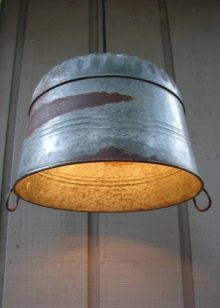
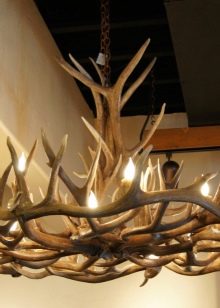
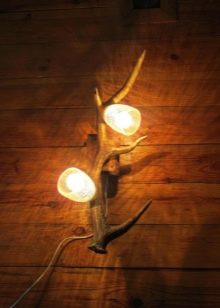
Since a small bathhouse implies the presence of only one window, you can arrange it with the help of spare parts from an old washing machine, turning the window into a funny porthole. If the door from the washing machine has retained its technical characteristics, then the window will close reliably, and the bathhouse itself will inadvertently become a place for installing such an original and funny "double-glazed window".
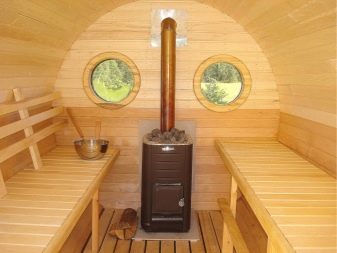
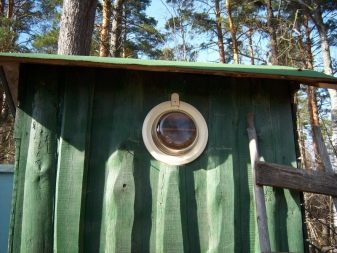
A bathhouse can be built anywhere: both on a small and on a large plot. The main thing is to correctly calculate everything and select the basic building materials so that they do not hit your pocket and provide the best result in the end. Following simple advice, any person will be able to build a bathhouse that will serve for a long time and will become both the pride of the owner and a worthy decoration of his site. At the final stages of construction, it will never be superfluous to sort out old things, which can become a source for the most daring design ideas, performing useful functions in the bath and providing a great mood.
For information on how to build a frame bath, see the next video.




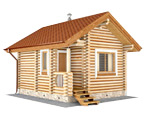
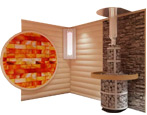
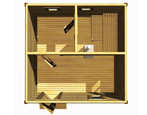
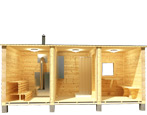
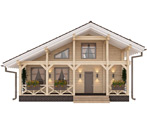
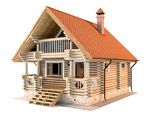


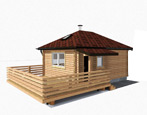
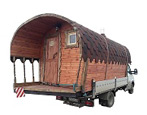


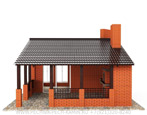

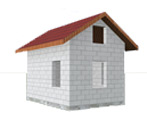

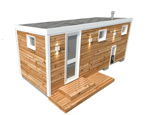
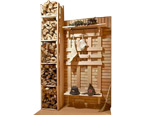
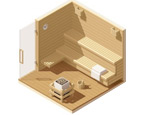
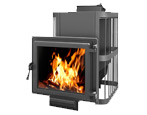
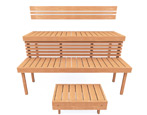


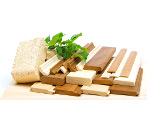


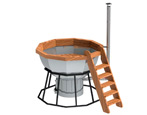
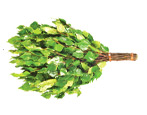
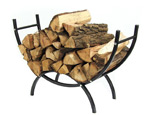
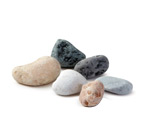
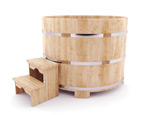
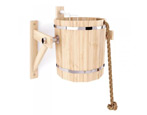
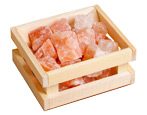

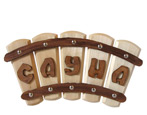
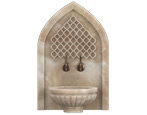

























































The comment was sent successfully.